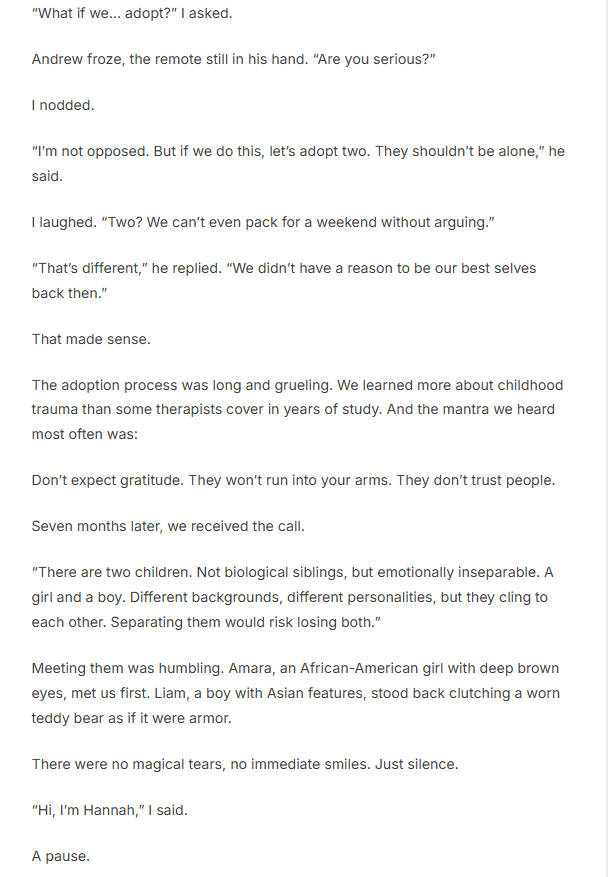In a world where digital connections dominate our daily lives, physical touch remains one of the most profound ways to express emotion, care, and love. Among all forms of touch, a simple hug stands out as one of the most powerful gestures. A hug can say what words sometimes cannot—it brings comfort, heals emotional wounds, and strengthens human bonds. But beyond its emotional symbolism, science shows that hugging has tangible physiological effects, particularly through the release of oxytocin, often called the “love hormone.”
This article explores how hugs promote oxytocin release, enhance emotional well-being, and foster stronger relationships, while also shedding light on the science behind this comforting act.







What Happens When You Hug Someone?
When two people hug, a complex chain of biological and psychological processes begins. The skin, our largest sensory organ, contains pressure receptors known as Pacinian corpuscles, which respond to gentle touch. These receptors send signals to the brain through the vagus nerve, a critical component of the parasympathetic nervous system—the body’s natural “calm and connect” system.
As these signals reach the brain, the hypothalamus triggers the release of oxytocin from the pituitary gland. This hormone plays a central role in human bonding, stress regulation, and emotional stability. Alongside oxytocin, hugging also helps lower levels of cortisol, the body’s primary stress hormone, and can increase the production of dopamine and serotonin, which contribute to feelings of happiness and contentment.
In essence, a simple embrace sets off a cascade of positive physiological responses that improve both emotional and physical health.
Oxytocin: The “Love Hormone” Behind Human Connection
Oxytocin is a small but mighty neuropeptide responsible for building and maintaining trust and intimacy between individuals. It’s released not just during hugs but also during childbirth, breastfeeding, and even in moments of empathy and kindness. Researchers have long associated oxytocin with feelings of safety, belonging, and love.
When oxytocin levels rise, people often feel calmer, more trusting, and emotionally connected. This is why hugs between friends, partners, or family members can feel deeply reassuring and comforting. Oxytocin essentially acts as a natural bonding agent—it strengthens social ties and fosters emotional resilience.
In romantic relationships, oxytocin helps partners develop a deeper sense of attachment and loyalty. In friendships, it fosters empathy and cooperation. And in parent-child relationships, it helps nurture feelings of safety and security. Simply put, oxytocin is nature’s way of reminding us that connection is vital for survival and happiness.
The Emotional Benefits of Hugging
1. Reduces Stress and Anxiety
Life’s pressures can easily overwhelm us, but physical touch acts as a natural stress reliever. Hugs lower cortisol levels, slowing the heart rate and reducing blood pressure. This helps the body transition from a state of tension to one of relaxation. The comforting pressure of an embrace tells your nervous system that you are safe, allowing you to breathe more easily and let go of emotional distress.
2. Enhances Mood and Emotional Stability
Hugs trigger a surge in oxytocin, dopamine, and serotonin—three chemicals that play key roles in mood regulation. These “feel-good” hormones counteract the effects of depression and anxiety by fostering positivity and emotional balance. Even brief, genuine hugs can uplift your spirits and help you navigate challenging days with a clearer, calmer mindset.
3. Strengthens Relationships
Physical affection is a cornerstone of trust and intimacy in any relationship. Regular hugging helps build emotional closeness, making it easier to communicate openly and resolve conflicts. Couples who hug frequently tend to report higher satisfaction and stronger emotional bonds, while children who grow up in affectionate environments often develop healthier self-esteem and social skills.
4. Encourages Empathy and Understanding
Hugging requires a level of vulnerability and openness. When you embrace someone, you’re silently saying, “I’m here for you.” This physical closeness fosters empathy, compassion, and emotional understanding—qualities essential for meaningful human connection.
The Physical Health Benefits of Hugging
Beyond its emotional rewards, hugging has a surprising number of physical health benefits. Researchers have found that regular, affectionate touch can contribute to better immune function, heart health, and even pain relief.
1. Boosts the Immune System
When oxytocin levels rise, the body’s immune function improves. This is partly because hugs lower stress hormones, which can otherwise suppress the immune response. Studies have shown that people who receive regular hugs are less likely to catch colds and recover more quickly from illnesses.
2. Lowers Blood Pressure and Heart Rate
Hugging activates the parasympathetic nervous system, which slows the heart rate and relaxes blood vessels. This physiological response can help reduce high blood pressure and protect against cardiovascular disease. Over time, people who experience consistent, nurturing touch tend to have better heart health and longevity.
3. Reduces Pain
Oxytocin not only calms the nervous system but also has mild analgesic (pain-relieving) effects. It can help reduce chronic pain and muscle tension by encouraging relaxation and improving circulation. A comforting hug, therefore, can be a gentle and natural way to ease physical discomfort.
The Social Importance of Hugging in a Modern World
In today’s increasingly digital society, genuine physical connection is becoming rare. Many people spend more time interacting through screens than engaging in face-to-face contact. Yet, human beings are inherently social and tactile creatures—our well-being depends on meaningful physical interaction.
Hugging helps counter the effects of loneliness and social isolation, which have become growing public health concerns. Studies show that individuals who experience regular affectionate touch report higher life satisfaction and lower rates of depression. Even in professional settings, appropriate gestures like handshakes, pats on the back, or brief hugs can improve teamwork and trust.
The absence of physical touch, on the other hand, can lead to what researchers call “touch starvation”—a condition associated with increased anxiety, sadness, and even weakened immune function. Reintroducing touch, starting with something as simple as a hug, can restore a sense of connection and belonging.
How Many Hugs Do We Need?
Renowned family therapist Virginia Satir once said,
“We need four hugs a day for survival, eight hugs a day for maintenance, and twelve hugs a day for growth.”
While these numbers aren’t based on strict scientific measurement, they highlight an important truth: consistent affection is essential for emotional nourishment. Hugging once in a while can lift your mood temporarily, but making it a regular habit can have lasting effects on mental and physical well-being.
So, whether it’s with a partner, family member, friend, or even a pet, make hugging a conscious part of your daily life.
How to Make Hugs More Meaningful
Not all hugs are equal. The intention behind the gesture determines its emotional impact. To make hugs more meaningful:
- Be fully present. Don’t rush the moment—focus on the person you’re embracing.
- Hold for a few seconds longer. A 20-second hug has been shown to release the most oxytocin and calm the nervous system.
- Breathe deeply. Synchronizing your breath can enhance relaxation and emotional connection.
- Offer consent and respect boundaries. Always ensure the other person is comfortable—genuine affection thrives in mutual trust.
The Power of a Simple Embrace
A hug might seem like a small act, but its effects ripple through our minds and bodies in profound ways. It’s a form of silent communication that says, “You’re not alone.” In moments of joy, grief, fear, or uncertainty, an embrace can bridge emotional gaps and restore a sense of safety and love.
Science continues to confirm what humans have known instinctively for millennia: physical touch is vital to our well-being. Every time we share a heartfelt hug, we’re not only nurturing relationships but also strengthening our own emotional and physical health.
Final Thoughts
Hugs are more than a warm gesture—they’re a biological necessity for connection, healing, and happiness. They reduce stress, release oxytocin, strengthen relationships, and improve overall health. In a fast-paced world filled with digital distractions, taking a few moments to share a genuine hug can reconnect us to what truly matters: human connection.
So, the next time you see someone you care about, take a moment to wrap your arms around them. That simple act might just make both your hearts a little lighter and your bond a little stronger.



